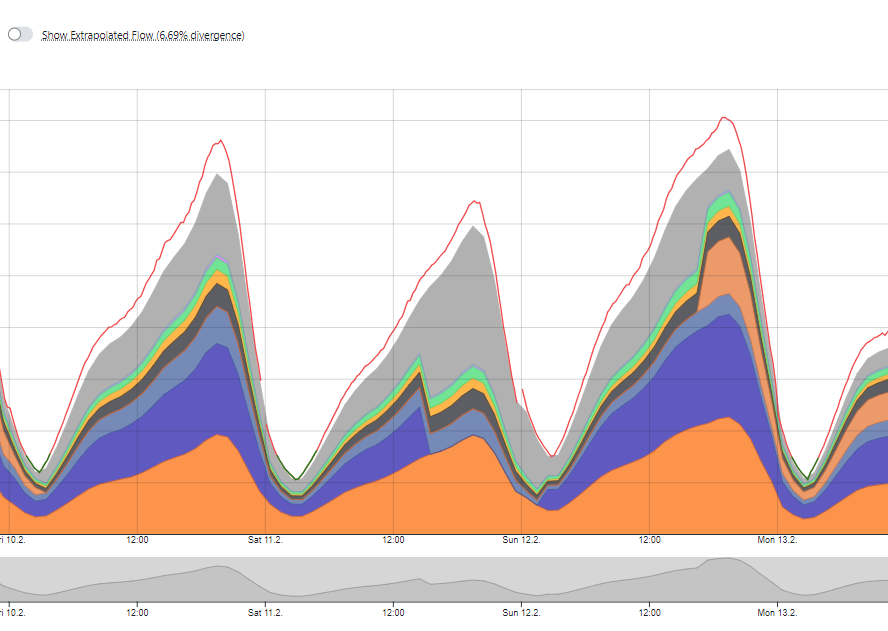There is no “I” in “team”, just like there is no “I” in “Netflow vs. SNMP”. It’s time to stop comparing Netflow and SNMP, and instead start talking about how well they work together when it comes to network monitoring.
If you do a quick internet search on the internet protocols SNMP and Netflow for network measurement, you will find an array of articles either that try to sell you the idea that accurate network monitoring is done with Netflow, not SNMP, or that simply compare the two usually with a slight bias against SNMP. But, what if we changed perspective and stopped looking at these protocols as one or the other and instead looked at them as one AND the other. What if, instead of comparing them, we cross-correlated them with one another, providing you with the advantages of both? In this post we will explain why accurate network monitoring is done with Netflow AND SNMP.
What are SNMP and Netflow?
For those of you not in the know, let’s start with the basics:
SNMP, also known as Simple Network Monitoring Protocol, is a standard internet protocol for collecting and organizing information about managed devices on IP networks and for modifying the information to change device behavior. This protocol was developed in the early days of the internet, back when it was about getting bits across the network and traffic could be easily measured. When it comes to collecting measurements, SNMP will simply show you the amount of traffic that has gone through your network.
Netflow, on the other hand, is a network protocol that collects information on all traffic running through a Netflow enabled device, and will examine each packet to create a flow model that displays the entire path taken by the traffic. This protocol was designed for monitoring, now that networks transfer large and diverse amounts of traffic instead of just bits. Netflow will show you a statistical measurement of exactly where your traffic came from and where it is going.
Why SNMP and Netflow work well together
Due to its age and capabilities, some network operators have deemed SNMP and other quantity measuring protocols as “inefficient” when monitoring the network because of the large amount and diversity of network traffic and players. The interest has thus shifted to not just knowing how much traffic is on the network, but what kind and from/to whom – which can determine so much about how you plan and maintain your network. Therefore, Netflow and other statistical measurements are promoted for getting insight into how traffic is behaving, while SNMP and other quantity measuring protocols are disregarded.
Although, given how complex the network has become, only being able to see the statistical data is still not the best solution when trying to monitor the network. The first problem is that a lot of guessing is involved. Given Netflow sample rates are very low (every 10,000 packets), this data can be very misleading during non-peak hours when it’s harder to extrapolate data from low traffic flows, showing you either too little or too much traffic than is actually there. The second is that you can’t detect if sampled data is missing due to various factors, such as different default configurations on each router, routers using different OS versions or network bottlenecks, which cause an unknown amount packet loss. For these reasons, traffic values can be misrepresented, especially during peak-hours. In most cases, these errors are discovered to be wrong months later when they become so large that it they need to be manually investigated. And for those of you who understand network economy and/or operation, this could mean lost revenue, poor performance and/or long term serious network failures.
So, what can we do to prevent false pretenses? As you already know, each protocol on their own shows one side of the picture: SNMP can show you an almost accurate amount of traffic passing through the network (sampling rate at 1 bucket/5 min), while Netflow can show you where it went. By cross correlating this information and comparing the data provided by both protocols, you can learn about any mistakes in calculations or measurements with a relatively small amount of effort.
With the BENOCS Analytics SNMP line feature, you can directly compare statistical flow traffic (all things Netflow) with measured traffic from SNMP for a more accurate view of your network’s traffic.
Here’s what we do:
- SNMP (top line): we collect via SNMP, Telemetry, Netconf and similar protocols inventory information, auto-detect new interfaces and gather information on byte-count, packet-loss and capacity in as little as 1 minute bucket sizes
- NetFlow (colorful area): we collect all flow-based information via sFlow, Netflow, IPFIX and similar protocols. We collect send- and receiver IP, traffic volume, interface & protocol information.
By adding the SNMP line feature to your current traffic display, you can create a more accurate picture of your network’s traffic measurements to prevent network failures, avoid costly mistakes, and generate savings just like this customer.
Would you like to learn more about the SNMP feature, or BENOCS Analytics? Contact us today! You can also request a free demo account to see what our tool can do for you!
When it comes to monitoring your network, its time to stop guessing and start knowing!
